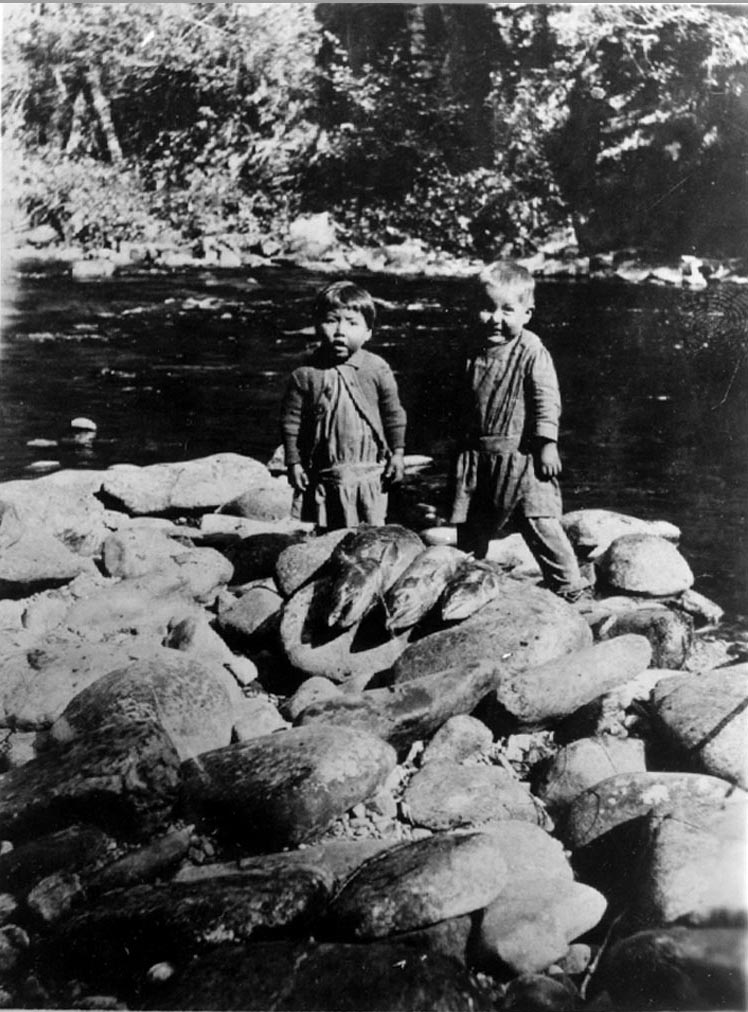| |
Josiah Pinkham discusses the importance of your Indian name and on recieving his own Indian name, Tipyeléhne cimúx cimúx. (Interviewed by Rodney Frey, March 2002) |
VillagesBefore the coming of the soyaapos , it is estimated that Nimíipuu population was more than 6,000, with each permanent village averaging some 125 men, women and children. The basic social and economic unit in each of these villages was the family. The villages, comprised of extended families often related to each other, ranged from 30 to 200 persons. In turn, the villages were politically unified into bands that, in turn, were organized into composite bands.
|
Lynn Pinkham tells of the importance of elders and of one's "brothers" and "sisters." (Interviewed by Ann McCormack, March 2002)
|
| |
Lynn Pinkham talks about her "uncles" and their importance in the family. (Interviewed by Ann McCormack March 2002) |
Extended Families
The Nimíipuu spent a large portion of time with "brothers" and "sisters" (called "cousins" in white society) and other extended family members. These extended family members were treated and referred to as "brothers" and "sisters." Nimíipuu villages were usually made up of several related, extended families and led by family headman. Generally he was the eldest able man in the group and was often assisted by prominent younger men. As an individual aged, their wealth, power, and status increased. Older males commanded the greatest level of respect and occupied the most important leadership positions.
| |
Horace Axtell, tribal elder, discusses the role and teachings of his grandmother in his upbringing. (Interviewed by Josiah Pinkham, December 2001) |
Names
Nimíipuu children were given names of important family ancestors, this practice was not only a way of honoring those that came before, but it is also believed that this could favorably influence the child's development. Often names were changed through ones lifetime due to important accomplishments or events that occurred. Nicknames were common as well.
| |
Horace Axtell tells of a few of the toys he grew-up with. (Interviewed by Josiah Pinkham) |
Marriage
Marriages were arranged by family heads. When a young man expressed interest in a particular girl, the family met to discuss if she came from an acceptable family and was not a close or distant relative. If the families were considered compatible, the couple would begin living together. After a sufficient amount of time passed and things were working out well for the new couple, a ceremony involving the exchange of gifts occurred between families. After the customary gift exchanges the couple was considered married.
| |
Horace Axtell talks on "games" he grew up with and on horse races. (Interviewed by Josiah Pinkham)
|
Death
When an individual died, it was announced by the camp herald or crier. The body was ritually bathed, combed, and decorated with red face paint and new clothes. When prepared for burial the body was wrapped in a robe and buried with a number of the deceased's valuables. After the burial, a feast was given by the deceased's relatives who also conduced the distribution of the deceased's remaining personal wealth, often including horses, robes, necklaces, and tools used for hunting, fishing, and warfare.
| |
Nakia Williamson, artist, discusses his "great grandmothers," and their inspiration for his art. (Interviewed by Ann McCormack February 2002) |
© Nez Perce Tribe 2002
< previous |
next > |











